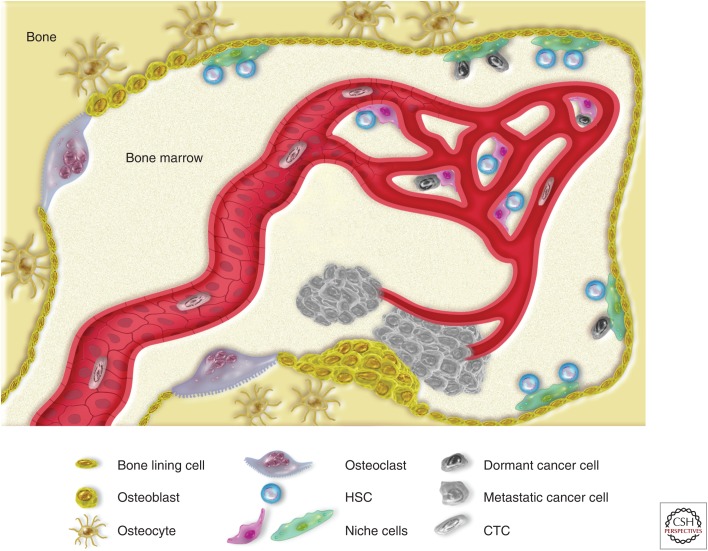Figure 3.
Dissemination of prostate cancer (PCa) cells in the bone marrow: from DTCs to overt metastasis. The hematopoietic bone tissue consists of two main parts: the bone tissue and the bone marrow. Bone is a highly regulated tissue that undergoes constant remodeling to keep its architecture and mechanical properties; as osteoclasts resorb weak bone, skeletal stem cells undergo local expansion, followed by differentiation into osteoblasts. Depending on the local microenvironment and the tissue architecture, osteoblasts will further differentiate either into bone-producing osteocytes or bone-lining cells—namely, the layer of cells that is in contact with the marrow cavities where hematopoiesis occurs. To ensure the lifelong production of blood, hematopoietic stem cells (HSCs) reside in specific areas, or niches, supported by specialized stromal cells (or niche cells) and can be found both at the endosteal and perivascular sides of the bone marrow. Within these niches, HSCs are induced in a state of quiescence, protected from cellular stresses, and prevented from further proliferation. Prostate CTCs may disseminate to the bone marrow and compete with the HSCs for the space in the niches. Within the niches, DTCs could remain dormant for an indefinite amount of time. Eventually, DTCs may exit their dormant state and start proliferating, bending the coupled processes of bone resorption and bone formation to support their growth. Most frequently, this vicious cycle produces hyperplastic bone tissue, eventually forming clinically relevant osteosclerotic metastasis.

